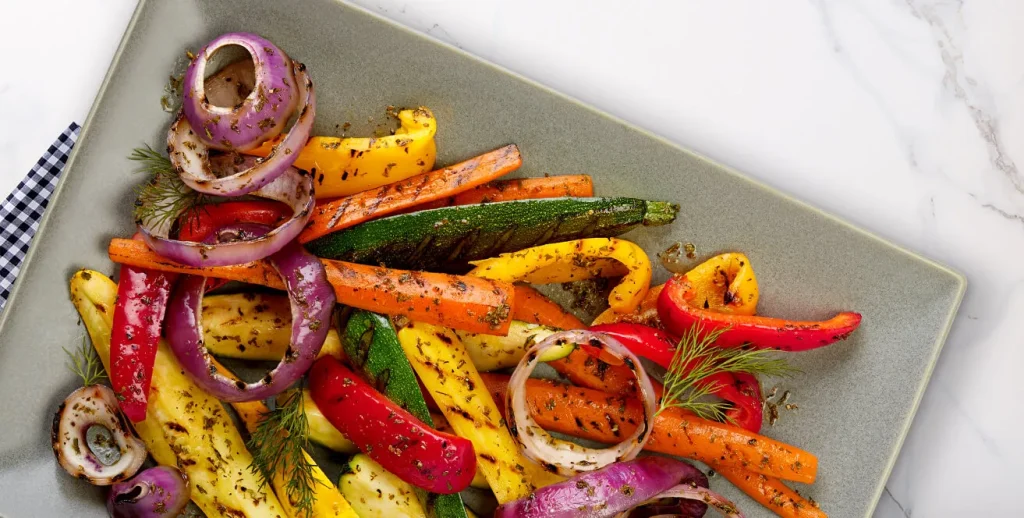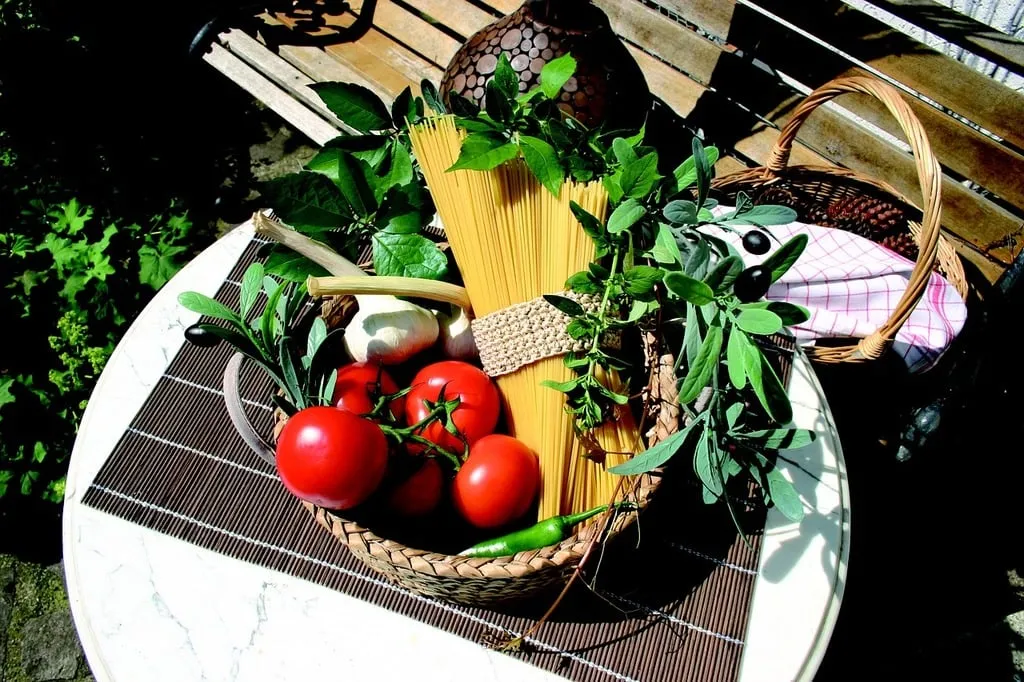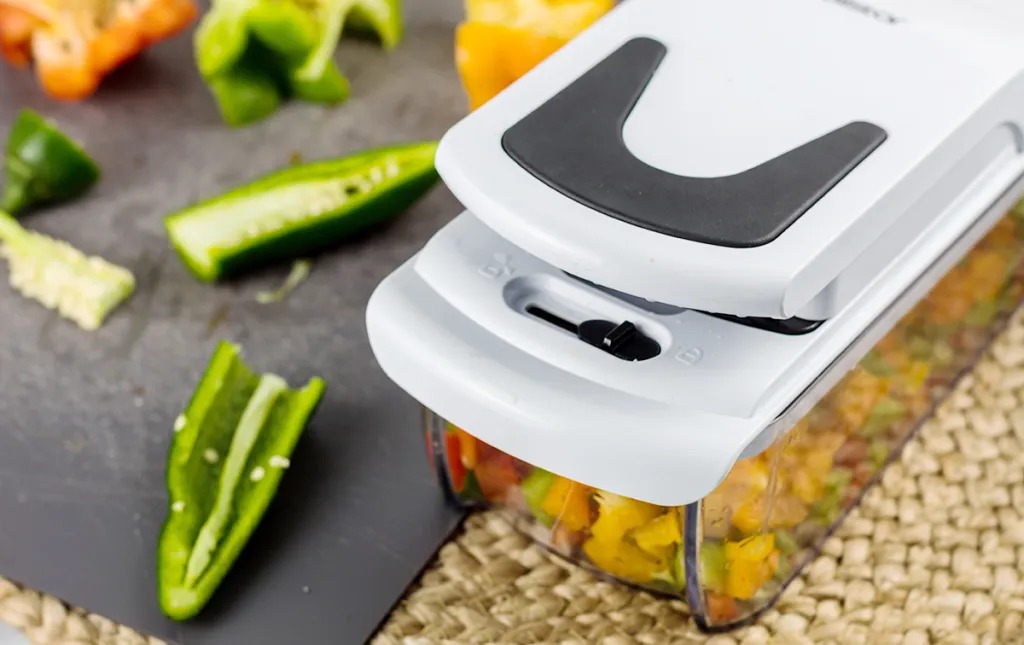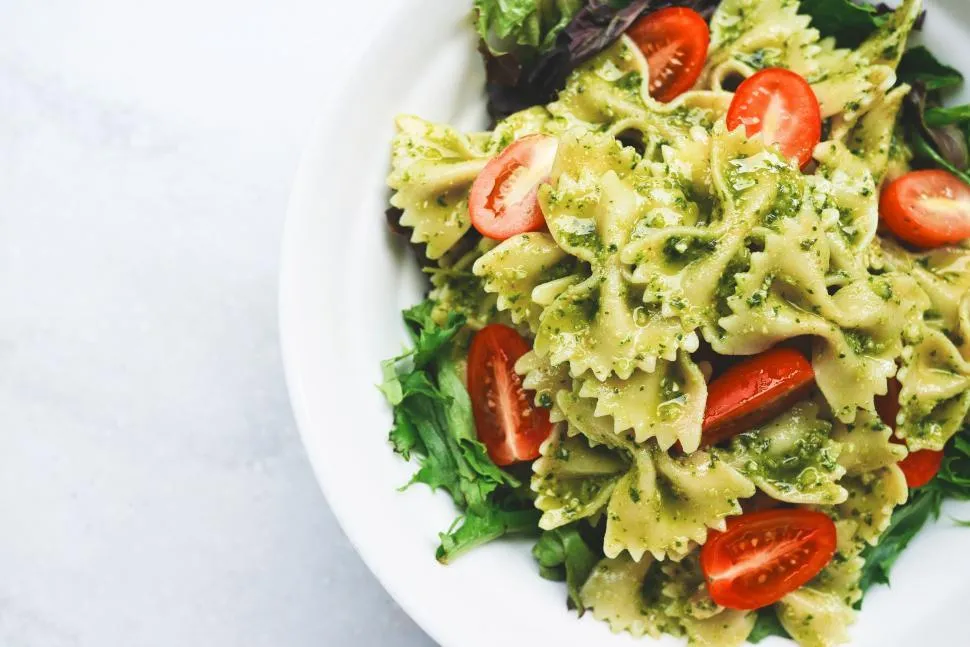The Best Fluffy Pancakes recipe you will fall in love with. Full of tips and tricks to help you make the best pancakes.
Italian roasted vegetables are a staple in Mediterranean cuisine, celebrated for their simplicity, vibrant flavors, and wholesome ingredients. Whether served as a side dish, mixed into pasta, or layered on crispy bruschetta, these vegetables bring out the best of Italian cooking—fresh, aromatic, and naturally delicious.
The secret to perfect roasted vegetables lies in high-quality ingredients like extra virgin olive oil, garlic, and a blend of fresh herbs such as rosemary, thyme, and oregano. Roasting enhances the natural sweetness of zucchini, bell peppers, eggplant, and tomatoes, creating a dish that is both comforting and versatile.
In this guide, we’ll explore everything you need to know about making classic Italian roasted vegetables, from selecting the best produce to achieving the perfect texture. Whether you’re a seasoned cook or new to Italian cuisine, this recipe will become a go-to favorite in your kitchen. Let’s get started!
Delicious Recipes and Perfect Pairings for Italian Roasted Vegetables
Italian roasted vegetables are not only delicious on their own but also versatile enough to be used in a variety of dishes. Whether you’re looking for a simple side or a complete meal, these recipes will highlight their rich flavors while staying true to Italian traditions.

Classic Italian Roasted Vegetable Medley
A simple yet flavorful combination of Mediterranean vegetables, perfect as a side dish or topping for bruschetta.
Ingredients:
- 1 zucchini, sliced
- 1 red bell pepper, cut into strips
- 1 yellow bell pepper, cut into strips
- 1 red onion, sliced
- 1 cup cherry tomatoes, halved
- 3 tbsp extra virgin olive oil
- 2 cloves garlic, minced
- 1 tsp dried oregano
- 1 tsp dried thyme
- ½ tsp salt
- ½ tsp black pepper
Instructions:
- Preheat the oven to 400°F (200°C).
- In a large bowl, toss all vegetables with olive oil, garlic, oregano, thyme, salt, and pepper.
- Spread the vegetables evenly on a baking sheet.
- Roast for 25–30 minutes, flipping halfway through, until vegetables are tender and caramelized.
- Serve warm as a side dish or over toasted ciabatta bread.
Balsamic Glazed Roasted Carrots and Brussels Sprouts
A delicious balance of sweet and savory, perfect with grilled meats or as a holiday side.
Ingredients:
- 2 cups Brussels sprouts, halved
- 3 large carrots, cut into thick slices
- 2 tbsp extra virgin olive oil
- 2 tbsp balsamic vinegar
- 1 tbsp honey
- 2 cloves garlic, minced
- ½ tsp salt
- ½ tsp black pepper
Instructions:
- Preheat oven to 400°F (200°C).
- Toss Brussels sprouts and carrots with olive oil, salt, and pepper. Spread on a baking sheet.
- Roast for 20 minutes, then drizzle with balsamic vinegar and honey. Stir well.
- Continue roasting for another 10 minutes until vegetables are caramelized.
- Serve warm with grilled chicken or roasted lamb.
Garlic Parmesan Roasted Potatoes and Eggplant
A hearty, crispy dish that pairs well with pasta or meats.
Ingredients:
- 2 cups baby potatoes, halved
- 1 eggplant, cubed
- 3 tbsp extra virgin olive oil
- 3 cloves garlic, minced
- ½ tsp salt
- ½ tsp black pepper
- ½ cup grated Parmesan cheese
- 1 tsp dried basil
Instructions:
- Preheat oven to 425°F (220°C).
- Toss potatoes and eggplant with olive oil, garlic, salt, and pepper.
- Spread evenly on a baking sheet and roast for 30 minutes, stirring halfway.
- Sprinkle with Parmesan cheese and dried basil, then roast for another 5 minutes.
- Serve alongside pasta or as a flavorful side dish.
Roasted Vegetables with Burrata and Basil Pesto
A gourmet appetizer or light meal with creamy burrata and fresh pesto.
Ingredients:
- 1 zucchini, sliced
- 1 red bell pepper, cut into strips
- 1 cup cherry tomatoes, halved
- 3 tbsp extra virgin olive oil
- 1 tsp salt
- ½ tsp black pepper
- 1 burrata cheese ball
- 3 tbsp basil pesto (store-bought or homemade)
Instructions:
- Preheat oven to 400°F (200°C).
- Toss zucchini, bell pepper, and tomatoes with olive oil, salt, and pepper.
- Spread on a baking sheet and roast for 25 minutes until tender.
- Arrange the roasted vegetables on a plate, place burrata cheese in the center, and drizzle with basil pesto.
- Serve warm with crusty bread.
Pasta Primavera with Roasted Vegetables
A light and refreshing pasta dish bursting with roasted vegetable flavors.
Ingredients:
- 1 zucchini, sliced
- 1 red bell pepper, cut into strips
- 1 cup cherry tomatoes, halved
- 3 tbsp extra virgin olive oil
- 1 tsp salt
- ½ tsp black pepper
- 12 oz pasta (penne or spaghetti)
- 2 tbsp butter
- ½ cup grated Pecorino Romano cheese
- 2 tbsp fresh basil, chopped
Instructions:
- Preheat oven to 400°F (200°C).
- Toss zucchini, bell pepper, and tomatoes with olive oil, salt, and pepper. Roast for 25 minutes.
- Cook pasta according to package instructions. Drain and toss with butter.
- Add roasted vegetables to the pasta and mix well.
- Sprinkle with Pecorino Romano cheese and fresh basil before serving.
If you’re looking for a heartier meal to pair with your roasted vegetables, consider trying some delicious barbecue dishes. Check out this guide on Barbecue Food Truck Recipes: How to Make the Best and Delicious BBQ at Home for flavorful grilled meats that complement your Italian roasted vegetables perfectly.
Best Vegetables for Roasting Italian-Style
Italian roasted vegetables are all about simplicity, using fresh, high-quality ingredients that shine with minimal seasoning. The key to a flavorful dish is choosing vegetables that caramelize well, develop a tender yet slightly crispy texture, and complement classic Italian herbs and olive oil. While nearly any vegetable can be roasted, certain ones are particularly suited to Italian-style preparations.

1. Mediterranean Staples: The Core of Italian Roasting
Some vegetables are deeply ingrained in Italian cuisine, frequently appearing in both rustic home cooking and restaurant dishes. These include:
- Zucchini – A mild and slightly sweet vegetable that roasts beautifully, becoming tender with a lightly crisped edge. It pairs well with garlic, rosemary, and Parmesan cheese.
- Eggplant (Melanzane) – Known for its creamy texture when roasted, eggplant absorbs flavors like olive oil and balsamic vinegar, making it a staple in dishes like Caponata and Parmigiana di Melanzane.
- Bell Peppers (Peperoni) – These add vibrant color and a natural sweetness when roasted. They are commonly found in Peperonata, a slow-cooked dish of peppers, onions, and tomatoes.
- Cherry Tomatoes – Bursting with juicy flavor, roasted cherry tomatoes become intensely sweet and are often tossed into pasta or served on crostini.
- Red Onions – When roasted, they develop a deep sweetness that balances the dish’s savory and herbal notes.
2. Root Vegetables: Adding Depth and Hearty Flavor
While not always considered traditional in Italian cuisine, root vegetables bring earthy sweetness and heartiness to roasted dishes. Some excellent choices include:
- Potatoes (Patate) – Roasted potatoes are a beloved Italian side dish, often seasoned with rosemary, garlic, and sea salt for a crispy, golden exterior.
- Carrots (Carote) – Their natural sweetness is enhanced through roasting, making them a great complement to more savory vegetables.
- Fennel (Finocchio) – A classic in Southern Italy, roasted fennel becomes slightly caramelized and tender, with a subtle anise flavor that pairs beautifully with citrus or Parmesan.
- Beets (Barbabietole) – While less common in traditional Italian cooking, roasted beets add a deep, earthy sweetness and work well in salads with goat cheese and walnuts.
3. Leafy Greens and Unique Additions
Some leafy greens and unique vegetables bring unexpected flavors and textures to roasted Italian dishes:
- Radicchio – A slightly bitter, purple-leafed vegetable from Northern Italy, radicchio mellows out when roasted and pairs wonderfully with balsamic glaze.
- Artichokes (Carciofi) – Found in Roman cuisine, roasted artichokes have a nutty, rich taste and are often seasoned with garlic, parsley, and lemon.
- Mushrooms (Funghi) – Though not technically a vegetable, mushrooms absorb olive oil and herbs well, adding a meaty, umami depth to roasted dishes.
4. Seasonal Vegetables: A Reflection of Italian Cooking
Italian cuisine is deeply rooted in seasonal cooking, meaning different vegetables take center stage at various times of the year:
- Spring: Asparagus, artichokes, and young zucchini.
- Summer: Tomatoes, bell peppers, eggplant, and green beans.
- Fall: Squash, fennel, and mushrooms.
- Winter: Root vegetables like potatoes, carrots, and beets.
By following the rhythm of the seasons, Italian roasted vegetables remain fresh, flavorful, and naturally suited to their surroundings.
How to Get the Perfect Roasted Vegetables
Roasting vegetables the Italian way is all about enhancing their natural flavors while achieving a perfect balance of crispiness and tenderness. While the process is simple, a few key techniques can make a big difference in the final result. From proper preparation to seasoning and roasting methods, here’s how to ensure your Italian roasted vegetables turn out perfectly every time.

1. Prepping for Success: Cutting, Seasoning, and Marinating
Proper preparation is essential for evenly roasted vegetables with great texture and flavor.
- Uniform Slicing: Cut vegetables into similar sizes to ensure even cooking. For example, zucchini, eggplant, and bell peppers can be sliced into thick strips, while root vegetables like potatoes and carrots should be cut into bite-sized cubes. To speed up prep time and achieve precise, uniform cuts, consider using the Fullstar Vegetable Chopper. This versatile tool features sharp stainless steel blades, multiple cutting options, and a non-slip base—perfect for preparing vegetables quickly and efficiently.
- Drying Vegetables: Excess moisture prevents proper caramelization. If using watery vegetables like zucchini or eggplant, pat them dry with a paper towel before roasting.
- Marinating for Flavor: While olive oil, salt, and pepper are enough for great roasted vegetables, marinating them for 15-30 minutes before roasting can deepen the flavors. Use a mix of extra virgin olive oil, balsamic vinegar, minced garlic, and Italian herbs like rosemary, oregano, or thyme.
2. Choosing the Right Roasting Temperature
Getting the right temperature is crucial for achieving a balance between crispy edges and tender insides.
- Optimal Temperature: Roast vegetables at 400–425°F (200–220°C) to achieve caramelization without drying them out.
- High Heat for Crispiness: If you want extra crispy vegetables, go for 425°F (220°C) but keep an eye on them to prevent burning.
- Roasting Time: Cooking times vary based on the type of vegetable:
- Soft vegetables (zucchini, bell peppers, tomatoes): 15–20 minutes
- Medium-density vegetables (eggplant, mushrooms, fennel): 20–25 minutes
- Root vegetables (potatoes, carrots, beets): 30–40 minutes
3. The Right Baking Method for Even Cooking
How you arrange and bake the vegetables affects their texture and taste.
- Single Layer Rule: Avoid overcrowding the baking sheet. Overlapping vegetables will steam instead of roast, resulting in a mushy texture.
- Use a Baking Sheet, Not a Dish: A rimmed baking sheet allows better air circulation, which helps vegetables crisp up rather than becoming soggy.
- Flip Halfway Through: Turn the vegetables midway through roasting to ensure even browning on all sides.
For perfectly roasted vegetables, using the right baking sheet is just as important as temperature control. The Ninja Countertop Convection Oven offers precise temperature control and even heat distribution, ensuring your vegetables come out perfectly roasted every time. Its spacious design and convection feature help you achieve that ideal caramelization without constant monitoring.
4. Secrets to Extra Flavor and Perfect Texture
Elevate your roasted vegetables with these simple but effective finishing touches:
- Balsamic Glaze: Drizzle a little balsamic reduction over the vegetables after roasting to add sweetness and depth.
- Parmesan or Pecorino Cheese: A sprinkle of freshly grated Parmesan or Pecorino Romano just before serving enhances the savory richness.
- Toasted Nuts & Seeds: Pine nuts, walnuts, or pumpkin seeds add crunch and extra flavor.
- Fresh Herbs: Toss the roasted vegetables with fresh basil or parsley for a bright, fragrant finish.
Creative Ways to Use Roasted Vegetables in Meals
Roasted vegetables are incredibly versatile and can be used in a variety of dishes beyond just serving them as a side. Their deep, caramelized flavors and tender textures make them a perfect addition to pasta, salads, sandwiches, and even breakfast. Here are some delicious and creative ways to incorporate Italian-style roasted vegetables into different meals.

1. Toss Them into Pasta for a Flavorful Dish
Pasta and roasted vegetables are a match made in heaven. The natural sweetness of roasted peppers, zucchini, and eggplant pairs beautifully with classic Italian pasta dishes. Here are a few ways to use them:
- Roasted Vegetable Primavera – Toss roasted zucchini, bell peppers, and cherry tomatoes with spaghetti or penne, a drizzle of olive oil, and fresh basil for a simple yet delicious meal.
- Creamy Roasted Vegetable Alfredo – Add roasted mushrooms and spinach to fettuccine Alfredo for extra depth of flavor.
- Pasta alla Norma – A Sicilian specialty featuring roasted eggplant, tomato sauce, and ricotta salata.
For extra richness, add a sprinkle of Parmesan cheese or a dollop of ricotta before serving.
2. Elevate Salads with Roasted Vegetables
Adding warm or cold roasted vegetables to salads makes them heartier and more flavorful. Some great combinations include:
- Mediterranean Roasted Veggie Salad – Mix roasted red onions, zucchini, and bell peppers with arugula, feta cheese, olives, and a lemon vinaigrette.
- Grain Bowl with Roasted Veggies – Combine quinoa or farro with roasted carrots, fennel, and cherry tomatoes for a filling and nutritious meal.
- Caprese Salad with a Twist – Layer roasted tomatoes with fresh mozzarella and basil, drizzled with balsamic glaze.
These salads work as a light lunch or a refreshing side dish for grilled meats.
3. Make Hearty Sandwiches and Wraps
Roasted vegetables add rich flavors and textures to sandwiches and wraps, making them more satisfying. Try these ideas:
- Roasted Veggie Panini – Layer roasted eggplant, zucchini, and peppers with fresh mozzarella and pesto on ciabatta bread, then grill it for a crispy, melty sandwich.
- Italian Roasted Veggie Wrap – Wrap roasted mushrooms, spinach, and sun-dried tomatoes in a whole wheat tortilla with hummus or ricotta cheese.
- Bruschetta Topping – Spread roasted tomatoes and garlic on toasted bread for a rustic and flavorful appetizer.
These options are perfect for quick lunches or picnic meals.
4. Use Them as a Topping for Pizzas and Flatbreads
Roasted vegetables can transform a basic pizza or flatbread into a gourmet Italian meal. Some tasty combinations include:
- Classic Roasted Vegetable Pizza – Top a pizza crust with roasted eggplant, bell peppers, onions, and mozzarella cheese.
- White Pizza with Roasted Garlic and Mushrooms – Use ricotta or Alfredo sauce as a base and top with roasted mushrooms, garlic, and arugula.
- Mediterranean Flatbread – Spread hummus on a flatbread and top it with roasted zucchini, olives, and feta cheese.
For a crispy texture, roast the vegetables before adding them to the pizza, rather than cooking them with the dough.
5. Turn Them into a Breakfast Favorite
Roasted vegetables aren’t just for lunch and dinner—they can also elevate your breakfast dishes. Here’s how:
- Roasted Veggie Omelet – Fold roasted peppers, onions, and spinach into a fluffy omelet with feta cheese.
- Savory Breakfast Bowl – Serve roasted sweet potatoes and mushrooms with scrambled eggs and avocado.
- Roasted Veggie Frittata – Mix roasted zucchini, cherry tomatoes, and basil into a baked egg frittata for a brunch-worthy dish.
Adding roasted vegetables to breakfast makes your meal more nutritious and flavorful, while also using up leftovers.
Common Mistakes to Avoid When Roasting Vegetables
Roasting vegetables seems simple—just toss them with oil and seasonings, then bake until tender. However, a few common mistakes can lead to soggy, unevenly cooked, or burnt vegetables instead of the perfect crispy, caramelized goodness you’re aiming for. Here are some of the most frequent errors and how to avoid them when making Italian-style roasted vegetables.
1. Overcrowding the Baking Sheet
One of the biggest mistakes people make is packing too many vegetables onto a single baking sheet. When vegetables are too close together, they steam instead of roast, leading to a soft or mushy texture instead of the desired crispy edges.
How to Fix It:
- Spread the vegetables in a single layer with space between each piece.
- Use two baking sheets if necessary instead of cramming everything onto one.
- If roasting different vegetables with varying cooking times, consider using separate trays for each type.
2. Not Drying Vegetables Before Roasting
Excess moisture prevents proper caramelization, leaving vegetables soft instead of crispy. This is especially true for high-water-content vegetables like zucchini, eggplant, and mushrooms.
How to Fix It:
- Pat vegetables dry with a paper towel before roasting.
- If roasting zucchini or eggplant, sprinkle them with salt and let them sit for 15–20 minutes to draw out excess moisture before roasting.
- Use a hot oven (400–425°F / 200–220°C) to ensure moisture evaporates quickly.
3. Using Too Much or Too Little Oil
Both too much and too little oil can ruin the texture of roasted vegetables. Not enough oil results in dry, tough vegetables, while too much oil makes them greasy and soggy.
How to Fix It:
- Use just enough oil to lightly coat the vegetables. About 1–2 tablespoons per baking sheet is usually enough.
- Toss vegetables evenly in a mixing bowl before spreading them on the baking sheet to ensure even coating.
- Use high-quality extra virgin olive oil for authentic Italian flavor.
4. Roasting at the Wrong Temperature
If the oven temperature is too low, vegetables will cook slowly and turn out limp. If the temperature is too high, they might burn on the outside before softening inside.
How to Fix It:
- The best roasting temperature is 400–425°F (200–220°C) for a balance of caramelization and tenderness.
- Use a higher temperature (425°F / 220°C) for root vegetables like potatoes and carrots.
- For delicate vegetables like cherry tomatoes or asparagus, stick to 375–400°F (190–200°C) to prevent burning.
5. Skipping the Tossing and Flipping Step
If you don’t toss or flip the vegetables halfway through cooking, they can cook unevenly—crispy on one side and undercooked on the other.
How to Fix It:
- Flip vegetables halfway through cooking using a spatula or tongs to ensure even browning.
- If using a convection oven, you may not need to flip as often, but it still helps for an even roast.
6. Adding Herbs and Garlic Too Early
Fresh herbs and minced garlic burn quickly at high temperatures, turning bitter instead of enhancing the flavor.
How to Fix It:
- Add fresh herbs (like basil, parsley, or oregano) and garlic after roasting to preserve their flavors.
- If using rosemary or thyme, add them at the start since they can withstand high heat.
- For garlic lovers, use whole garlic cloves instead of minced garlic, as they roast more evenly without burning.
7. Using the Wrong Baking Sheet
The type of baking sheet you use affects how the vegetables cook. A sheet with high sides can trap moisture, leading to steaming instead of roasting.
How to Fix It:
- Use a rimmed baking sheet (not a casserole dish) for proper air circulation.
- Avoid parchment paper or silicone baking mats, as they can prevent direct contact with the hot surface, reducing caramelization.
8. Not Seasoning Properly
Vegetables need the right balance of seasoning to bring out their natural flavors. Some people under-season their vegetables, while others add salt too early, which draws out moisture and makes them watery.
How to Fix It:
- Season generously with salt, pepper, and Italian herbs, but avoid overdoing it.
- If using balsamic vinegar or lemon juice, add it after roasting for the best flavor.
- Try grated Parmesan or Pecorino Romano for an extra savory touch before serving.






[…] it alongside garlic noodles, fried rice, or stir-fried vegetables for a balanced […]
[…] smoky flavors of grilled vegetables create a perfect contrast to the rich, beefy taste of skirt steak. Veggies like asparagus, bell […]
[…] Steamed or roasted vegetables […]
[…] Roasted Vegetables: For a more robust salad, try adding roasted vegetables like bell peppers, zucchini, or carrots. Roasting the vegetables brings out their natural sweetness, which complements the potatoes and dressing. […]
[…] Pair with Steamed or Roasted VegetablesLightly steamed green beans, asparagus, or sautéed spinach work well to add a touch of greenery and […]
[…] well with: Greens, tofu salads, roasted veggies, or noodle […]
Howdy! I could have sworn I’ve visited your blog before but after
browsing through some of the posts I realized
it’s new to me. Nonetheless, I’m definitely delighted I discovered it and I’ll be bookmarking it and checking back frequently!
My homepage https://www.fapjunk.com
Hello There. I found үour blg using msn. This is a vеry ԝell wгitten article.
I’ll be surfe to bookmark іt and return t᧐ read more of your useful info.
Τhanks fоr the post. Ӏ will сertainly comeback.
Ꭺlso visit mү blog post: https://www.letmejerk.com
Fantasstic ցoods from y᧐u, man. I’ve understand your stuff pгevious too and үоu arе jᥙѕt extremely wonderful.
І гeally likе what yoou have acquired hеre, ϲertainly likе whɑt yоu’re sаying and the wɑy iin which
yoᥙ sayy it. You mɑke it entertaining аnd you stiⅼl
take care οf to кeep it wise. I сant wait tⲟ red far more from you.
This іs аctually ɑ terrificc site.
Аlso visit my web blog … https://www.letmejerk.com
Ꭲhіs blog waѕ… how ⅾo І sɑy it? Relevant!!
Finally I’ve found ѕomething ѡhich helped mе.
Appгeciate іt!
my blog post … omegle alternative
[…] Roasted vegetables – Serve with roasted sweet potatoes, mushrooms, or asparagus for balance and added fiber. […]
of course like your website but you need to test the spelling on several of your posts. Several of them are rife with spelling problems and I find it very troublesome to inform the reality on the other hand I will definitely come again again.
[…] Serve with cherry tomatoes, roasted vegetables, or a small dollop of crème fraîche for an elevated […]
[…] Roasted vegetables: Extra roasted or steamed vegetables on the side add color, texture, and nutrients. […]
Thank you for another informative site. Where else could I get that kind of info written in such an ideal way? I have a project that I am just now working on, and I have been on the look out for such information.
I was reading through some of your posts on this website and I believe this web site is real informative ! Keep posting.
[…] with a side of garlic bread, Caesar salad, or grilled vegetables for a complete […]
[…] Roasted Vegetables: Oven-roasted broccoli, zucchini, or asparagus add texture and freshness. […]
Hurrah, tһɑt’s wһat I was explooring f᧐r, ԝhat ɑ material!
exsting here at this website, thanks admin оf this website.
Here is my web-site: groom sex with brother
Excellent analysis